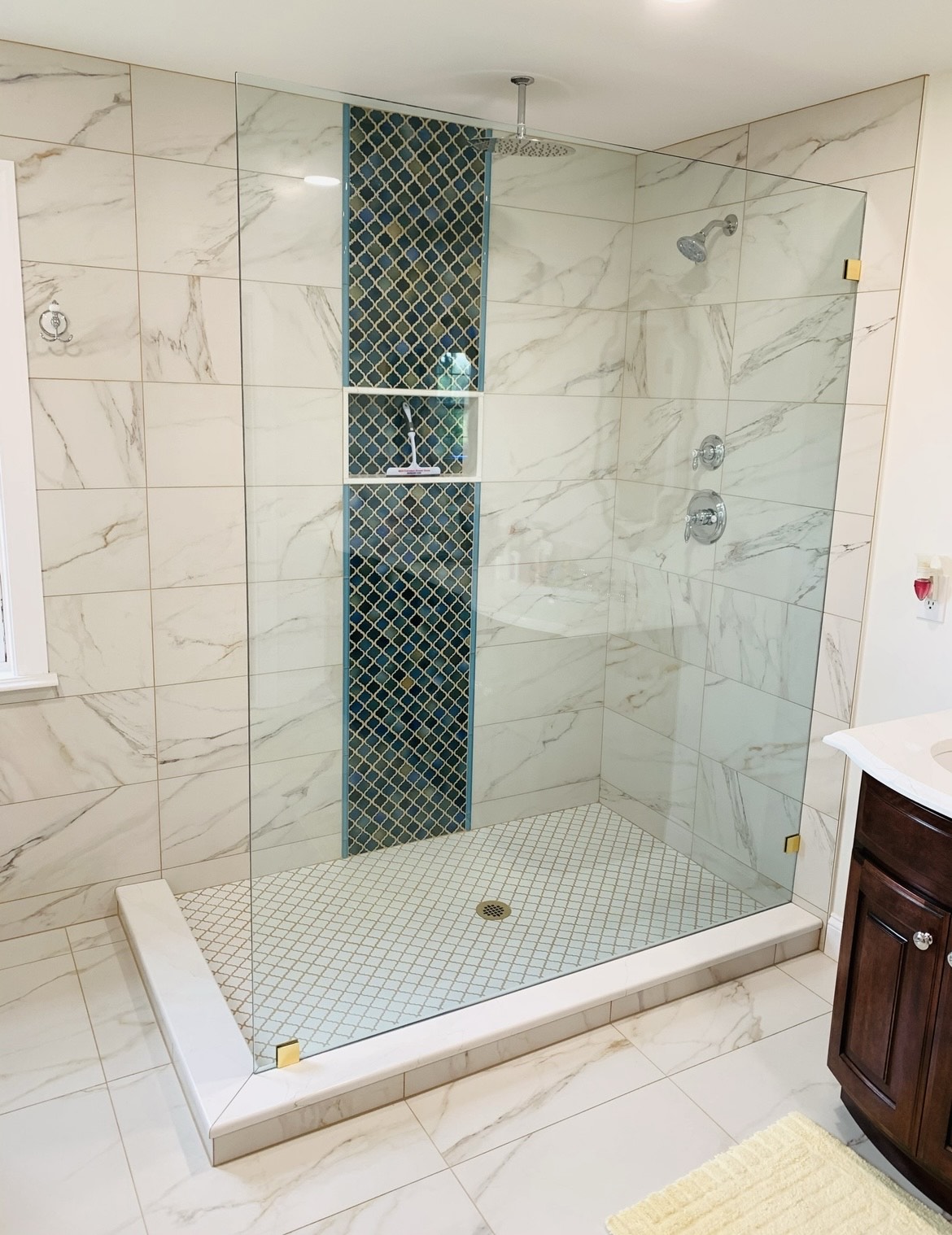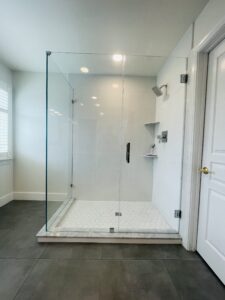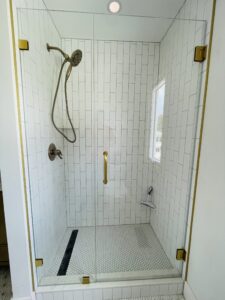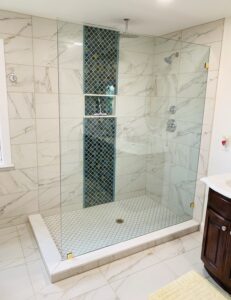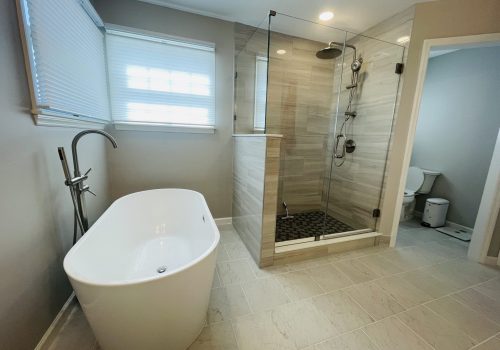How to Seal Your Frameless Shower Doors?
A frameless shower door adds a sleek, modern touch to any bathroom — but without a proper seal, water can escape, creating slippery floors and potential damage. Sealing your frameless shower door helps prevent leaks and keeps your bathroom safe and stylish.
The good part is that you can easily seal frameless shower doors on your own or with the help of a professional. In this blog post, we’ll learn about everything related to the sealing of frameless shower doors and the best way to seal glass shower doors.
Why Sealing Matters?
If your shower doors aren’t sealed, water can leak out from the gaps. It can cause serious problems later on. This is why sealing your door is so important:
- It helps to prevent leaks and mold by using heavy-duty seals
- It prolongs the life of glass & metal parts by preventing water from affecting hinges and frames.
- It helps to keep your bathroom cleaner; a tight seal means fewer water puddles.
How to Seal a Glass Shower Door?
You can seal your frameless shower door easily by following the steps below:
Step 1: Prepare the area by cleaning
First, remove old caulk or residue with the help of a blade. Then, use rubbing alcohol or a good glass cleaner to wipe the edges of the glass and the shower base clean.
When applying new silicone, ensure the surrounding area is completely dry — not only will a damp surface make it harder for your seal to adhere properly, but also it’s less likely to stand the test of time.
Step 2: Tape the Edges
You should use the tape around the edges you are sealing. This will provide you with nice, straight lines and stop the silicone from spreading onto the glass.
Step 3: Apply the Silicone
Seal the shower door with silicone. Cut the tip of the silicone tube at a 45-degree angle to use with a caulking gun. Run a thick, continuous bead of silicone along the bottom edge and corners of doors — particularly near hinges or around gaps where water can seep out.
Step 4: Smooth the Seal
Wet a finger or use a caulking tool to smooth out the silicone. Smooth the seal neatly between surfaces to ensure a clean, uniform finish that prevents leaks effectively.
Step 5: Let It Cure
Let the silicone dry for a minimum of 24 hours before showering. Don’t touch or knock the seal for a good while, in order to allow it to set and waterproof.
Types of Seals for Frameless Shower Doors
Not all seals are the same; each is tailored to work with different places where water could escape from. Learning them will help to understand the sealing better.
Bottom sweeps: These are attached to the underside of the door and stop water from dripping onto your bathroom floor.
Side or jamb seals: These are along the sides, preventing water from slipping through where the glass door meets a wall.
Silicone caulk: This is used to fill in little cracks and edges when other seals just won’t do, and will help keep everything fully waterproof.
Tools and Materials You’ll Need
You should have all of your tools and materials before you start the sealing process. It will help you to keep working smoothly. You’ll need:
- Clear silicone caulk (mold-resistant)
- Caulking gun
- Masking tape
- Utility knife or razor blade
- Rubbing alcohol or glass cleaner
- Paper towels or lint-free cloth
Maintenance Tips for Glass Shower Door Seals
The Following are some tips for keeping your frameless shower door sparkling clean and free of annoying leaks.
- Inspect seals regularly – You should look for any damage or wear before it gets worse.
- Clean carefully – Use a soft cleaner on the surface, do not apply strong detergents as they may destroy silicone.
- Reseal when necessary – If there are leaks, the peeling of a coating or discolouring, then you will need to reapply sealer.
Mistakes to Avoid in Sealing
These are the most common mistakes that should be better avoided for a smooth process:
- Using the wrong silicone – It can cause damage. Use mildew-resistant silicone that is made for bathrooms.
- Bypassing surface prep – the dirt or moisture isn’t wiped up, which can prevent the sealant from adhering.
- Too much caulking – Applying it too thick, overly uneven, and you may find the mess is not what tends to end up sealing and managing moisture well.
- Rushing the dry time – Allow the seal to cure completely before using for maximum waterproofing power.
Conclusion
Protecting your frameless shower door isn’t just for looks — it’s about preventing water from leaking all over your bathroom and forming mold. And with the right materials, many of which are available at your local home improvement store, sealing your frameless shower door isn’t a hard task and can be achieved over the course of a weekend.
If DIY is not your thing, you can always call M&N Frameless Shower Doors LLC. All of our work is done by professionals who take the time to ensure every installation and seal jobs are trusted enough to leave your shower door perfect.

